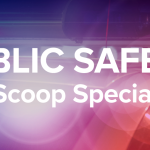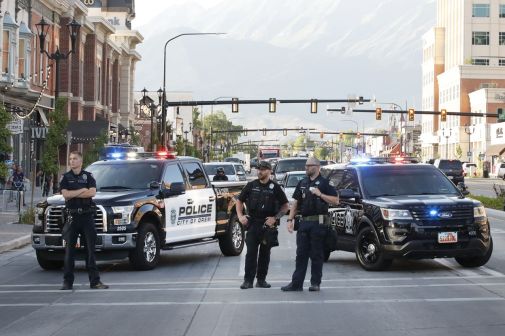Seeing through the noise: How public safety should turn to social media for emergency communications

Sometimes when lives, property and infrastructure are at stake, gut decisions aren’t enough.
How do we get what we need, when we need it, and make it available to decision-makers and the public? How do we find the nuggets of information we need in that vast sea of data?
Ten years ago, emergency managers had to make high-impact, high-consequence decisions in a condensed time frame with little or no information. Those decisions required information that was timely and accurate, and a decade ago, that was next to impossible.
Flash forward to 2017 — we still make high-impact, high-consequence decisions in a condensed time frame, but now we have too much information.
Through social media, traditional news, open data and rapid transmission of intelligence from the field, available information has grown exponentially. Nevertheless, the blind spot is still information.
We must automate how we capture and pass along trusted information, integrate how it is shared across multiple platforms and people, and study the social science behind how we communicate it in a way that is relevant and actionable.
Automation
Whether you’re looking at an emergency management team for a small municipality, or the third largest county in the nation, people are a scarce resource. So, how do you lessen that demand and remove a human being from being a barrier to the flow of trusted information?
You automate the information gathering and distribution process.
The traditional way is simply too cumbersome. Without some automation, individuals on the receiving end of information feeds have to quickly interpret a lot of incoming data, vet it and repackage it to get it back out through their own channels.
Too often, we serve as middle men to potentially life-saving information. While Harris County’s Regional Joint Information Center (JIC) does this with trained teams from different agencies that gather, analyze and inform during times of crisis, there is no need to do it for every piece of information that comes in.
Trusted information should automatically skip the gather and analyze steps and head straight into a pipeline of information that goes directly to our residents.
Technology lets us focus on the information that actually requires a deeper look. It also gives us more time to concentrate on generating our own unique information and to think strategically rather than reactively.
Weather alerts, real-time flood data and transportation updates are just a few examples of how we automate the information sharing process. We automatically capture weather alerts and push them without delay to social media, apps, websites, news outlets and other platforms, because the National Weather Service is a trusted partner.
As a result, weather alerts populate all of our platforms before they even appear on NWS’ own social media. The same is true for flooding and traffic information. An emergency management office with a talented tech team can create solutions to do this. At the most basic level, RSS can do the trick.
Integration
In our county, the Emergency Operations Center (EOC) is a hub of partner organizations that come together to respond to disasters.
These partners provide critical information on law enforcement, utilities, roads, fire, EMS, public officials, public health, cell phone service and other critical functions during a disaster. All of these groups provide valuable information, but also contribute to the information overload, which can cause unnecessary delay.
Having 98 computer stations manned with staff — all in one room — can help with that integration, but there are opportunities to cut out the human element in some critical areas by capitalizing on automation.
Instead of partners having to log on to multiple platforms to share the same information, we can integrate systems so the same information populates multiple platforms at once. We integrate information sharing across transportation, public safety, health, utilities, medical and other platforms, so all partners can get critical information at the same time.
On another level, integration plays a key role in how we represent complex, critical life-saving information. By working with flood control, transportation and weather partners, the JIC now automatically combines three sets of independent data into one product.
For example, when there is more than one inch of rainfall in an area within 15 minutes, affected bayous are likely to rise and streets will flood. Rather than having each of these partners work separately to get their own message out, automation and integration allow for critical elements to be pushed out in seconds. Through this collaboration, a tweet is automatically pushed out saying that that nearby streets will flood due to heavy rain near that bayou.
In the future, we hope to tell you not just where it is flooding, but where it will be flooding.
Social Science
Hyperlocal alerts from programs like Nextdoor are growing, emergency alerts on phones are commonplace and apps like ReadyHarris are popular. But even if we are doing a better of job of getting information out through automation and integration, there is still hard work to be done.
We have to push that information to where people want it, how they like to see it, and in a way that compels them to take action. Social scientists are making great strides in learning how messages should be crafted so people take them seriously.
Social media is just one example.
People don’t click on links as much as we think, capitalizing key words helps, and images are essential.
We can’t just automate and integrate in a way that is easy for us. We need to partner with social scientists to see how the automation and integration of life-saving information can be tweaked in a way that has the most impact.
We have to recognize that what we find to be true today most likely won’t be true a year from now. This won’t be easy, but it is the essential next step.
Our mission is to gather, analyze, and inform. It’s a complex process that we have to make much simpler and effective because our elected officials expect it, our partners count on it, and the public deserves it.

This story was featured in StateScoop Special Report: Public Safety (2017)





